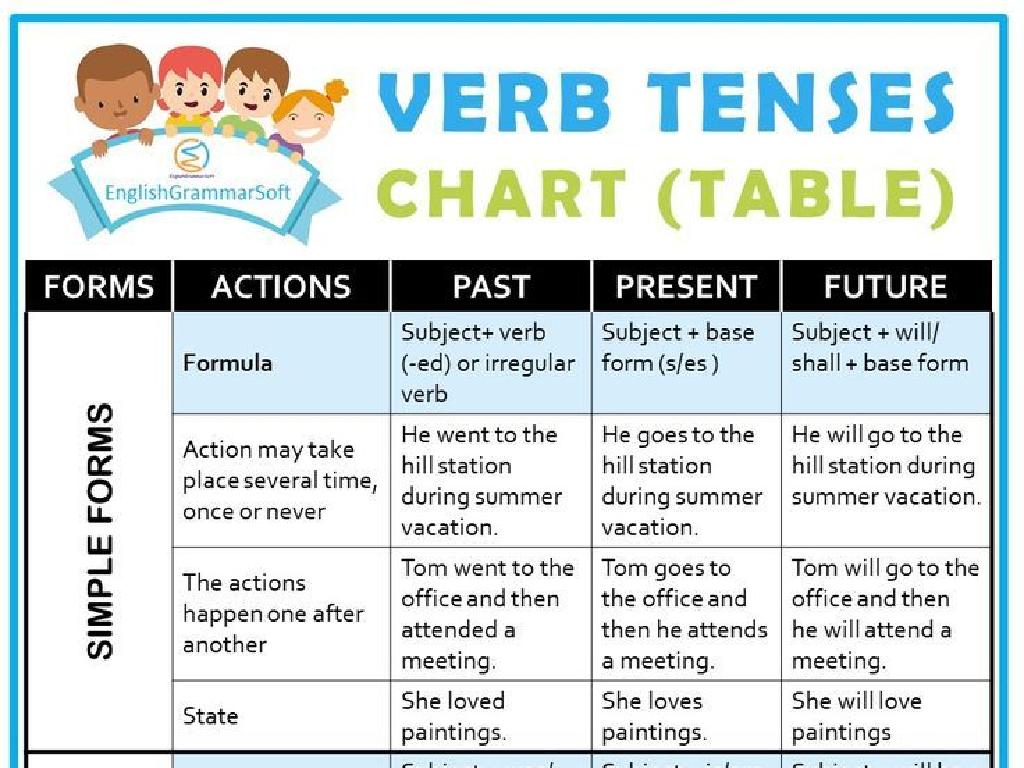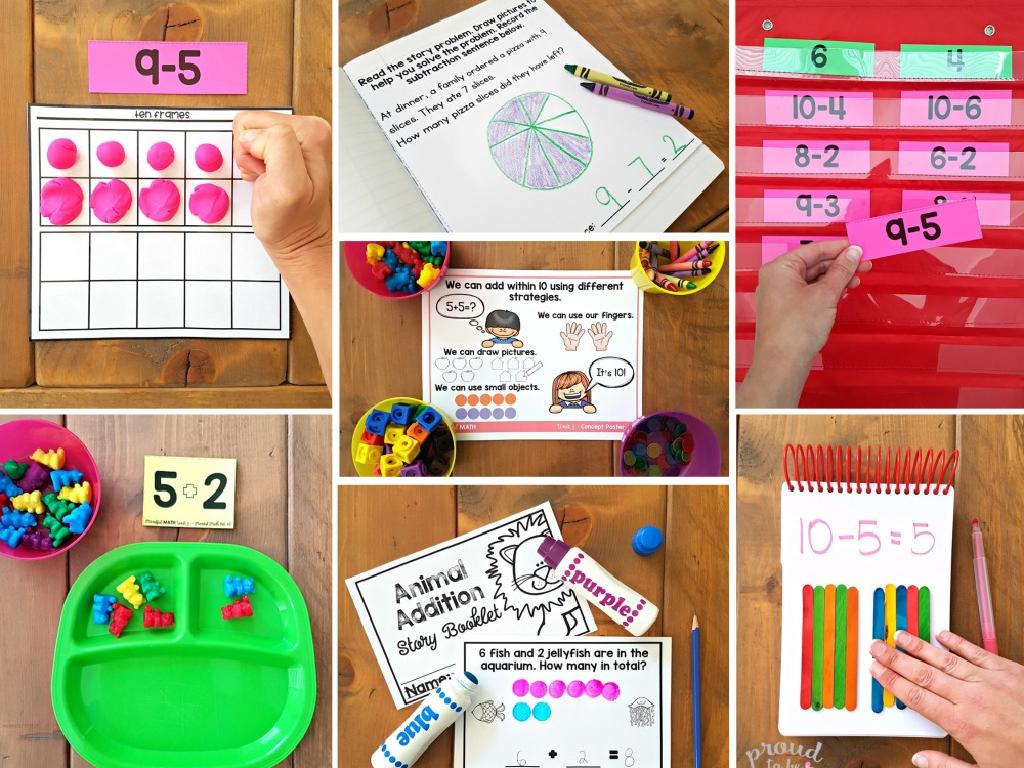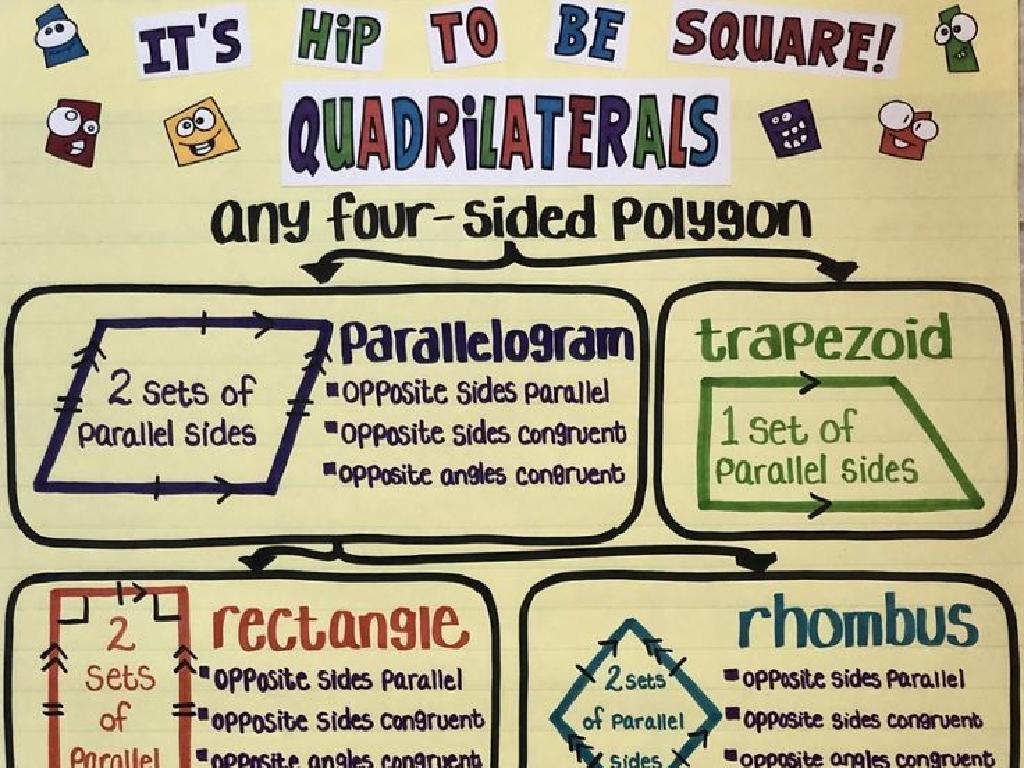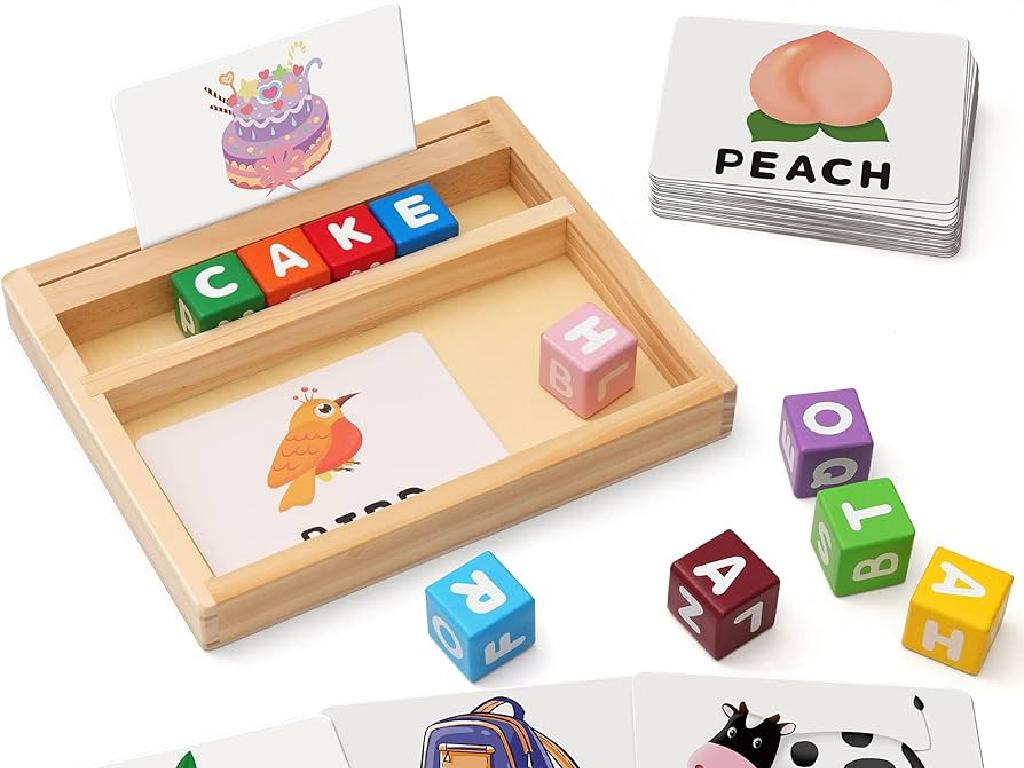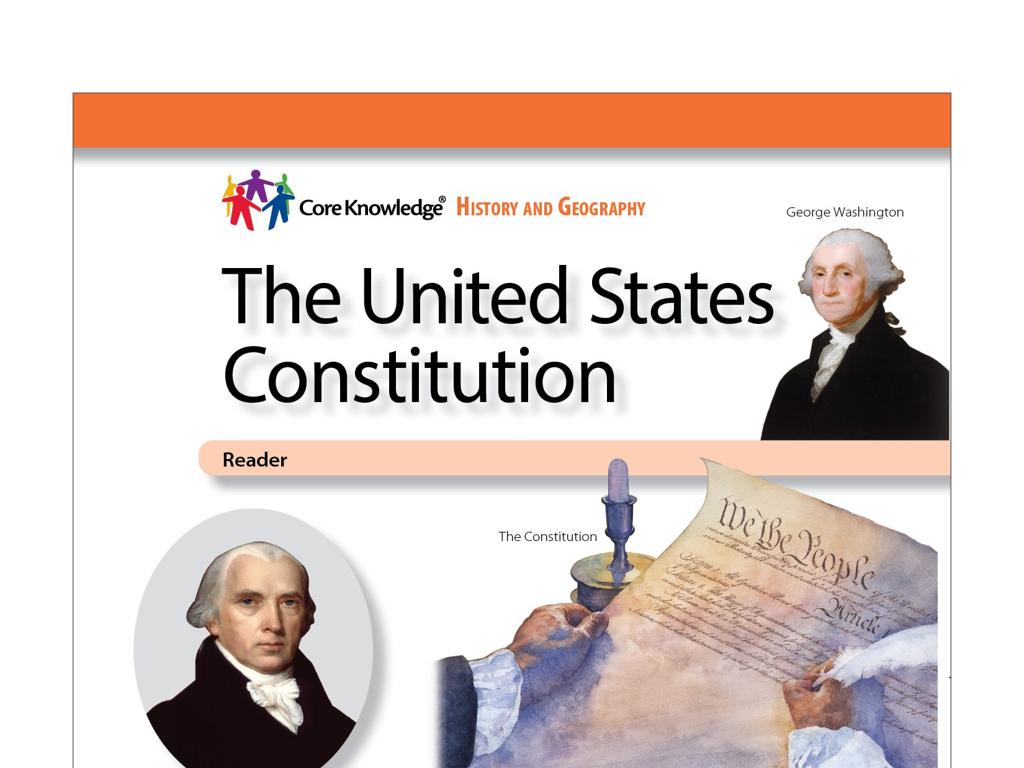Shape Patterns
Subject: Math
Grade: Kindergarten
Topic: Patterns
Please LOG IN to download the presentation. Access is available to registered users only.
View More Content
Welcome to Patterns!
– Greet our little explorers
– Today’s adventure: Shape patterns
– We’ll explore patterns made of shapes like circles, squares, and triangles.
– Discovering patterns around us
– Look at tiles, fabrics, or wallpapers for patterns.
– Engage with patterns in class
– We’ll create and extend shape patterns together.
|
Begin the class with a warm and enthusiastic greeting to capture the children’s attention. Introduce the concept of shape patterns by explaining that patterns are everywhere around us. Encourage the children to observe their surroundings and identify patterns they can see in the classroom or in their daily life, such as the arrangement of floor tiles or designs on their clothes. Use simple language and examples that are relatable to their environment. During the class, engage the children in activities where they can create their own patterns using shapes and extend existing patterns to reinforce their understanding. The goal is to make the learning process interactive and fun.
Exploring Patterns
– What is a pattern?
– A pattern repeats in a logical order.
– Patterns all around us
– Look at patterns in clothes, buildings, and nature.
– Patterns in music and nature
– Clapping rhythms or leaves changing colors.
– Recognizing patterns
– Find and continue the sequence.
|
This slide introduces the concept of patterns to Kindergarten students. Begin by explaining that a pattern is a sequence of things that repeat in a specific and predictable way. Use examples from the children’s environment, such as stripes on clothes or bricks in a wall, to illustrate patterns they can see. For music, you can demonstrate simple clapping patterns, and for nature, discuss seasonal changes or animal markings. Encourage the children to observe and recognize patterns in their surroundings and to predict what comes next in a sequence. This will help develop their critical thinking and problem-solving skills.
Shapes All Around Us
– Shapes make up patterns
– Daily shapes: circles, squares, triangles
– Like wheels (circles), windows (squares), and signs (triangles)
– Find shapes in our classroom
– Let’s look around and point to them
– Shapes are everywhere!
|
This slide introduces the concept of shapes as fundamental components of patterns, which are a key part of the kindergarten math curriculum. Start by explaining that patterns are made up of shapes that repeat in a certain order. Show examples of everyday objects that are circles, squares, and triangles to make the connection to the real world. Encourage the children to actively participate by pointing out shapes they recognize in the classroom. This activity helps to develop their observational skills and reinforces their understanding of shapes in a fun and interactive way. Make sure to praise their efforts to build confidence.
Creating Fun Shape Patterns
– Shapes make up patterns
– Example: square, circle, square, circle
– Like beads on a necklace or blocks in a row
– Make your own shape pattern
– Use different shapes to create a sequence
– Share your patterns with the class
– Show and tell your unique pattern
|
This slide introduces the concept of patterns using shapes, which is a fundamental math skill for Kindergarten students. Start by explaining that a pattern is a design that repeats. Show them a simple pattern using common shapes like squares and circles. Encourage the students to create their own patterns using a variety of shapes and colors if available. Provide them with cut-out shapes or blocks to make this a hands-on activity. After they have created their patterns, have a show-and-tell session where each student can display their pattern and describe it to the class. This activity will help them recognize, create, and describe patterns, which are essential early math skills.
Pattern Practice: Find the Missing Shapes
– It’s your turn to find missing shapes
– What shape comes next in the pattern?
– Look at the sequence and guess the next
– Patterns repeat in a special order
– A pattern might be circle, triangle, circle, triangle…
– Let’s practice with fun shapes!
– We’ll use shapes like circles, squares, and triangles!
|
This slide is designed to engage Kindergarten students in recognizing and completing shape patterns. Start by explaining that a pattern is a sequence that repeats in a specific way. Use simple shapes like circles, squares, and triangles to create visual patterns and ask the students to identify the missing shape in the sequence. Encourage them to look for the order in which shapes appear and use that to predict what comes next. Provide examples on the board or with physical shapes, and then let the students practice with patterns you’ve prepared. Offer praise and guidance as they work through the exercises. This activity will help develop their critical thinking and problem-solving skills.
Let’s Play a Pattern Game!
– I’ll start, you finish the pattern
– Play the pattern game with friends
– Ask for a hint if you’re stuck
– Think: What comes next? Is it a circle, square, or triangle?
– Have fun and learn about patterns
– Patterns are everywhere! Like stripes on a shirt or petals on a flower.
|
This slide introduces a fun and interactive pattern game for Kindergarten students to help them recognize and complete shape patterns. Start a pattern using simple shapes like circles, squares, and triangles, and encourage the children to identify and extend the sequence. Promote teamwork by having them play with friends. If a child is unsure, provide hints by emphasizing the repeating elements. The goal is to create an engaging learning environment where students can discover the concept of patterns in a playful manner. Prepare several examples of patterns and hints to ensure a smooth and educational game experience.
Class Activity: Pattern Parade
– Join the Pattern Parade!
– Receive a shape for the pattern
– Create a pattern as a class
– We’ll line up and repeat our shapes in order
– March to music with our pattern
– Follow the rhythm and show our pattern
|
This activity is designed to help Kindergarten students recognize and create shape patterns in a fun and interactive way. Each student will be given a shape, such as a circle, square, or triangle. The class will then work together to form a repeating pattern with their shapes. When the music starts, students will march in a parade format, holding up their shapes to visually display the pattern they’ve created. This kinesthetic approach to learning will help solidify the concept of patterns in their minds. For the teacher: Prepare different shapes in various colors, ensure there’s enough space for the parade, select cheerful music that’s easy to march to, and consider having different patterns for different groups to accommodate all students.
Review and Goodbye, Pattern Experts!
– Excellent pattern making today!
– Find a home pattern to share
– Look around for any sequence that repeats
– Tell us about your pattern tomorrow
– Maybe a pattern in floor tiles or on a bedspread?
– See you next time, friends!
|
Today’s class was all about recognizing and creating patterns, a fundamental math skill. As we wrap up, encourage the children to continue their learning at home by observing patterns in their environment. This could be anything from the arrangement of tiles to the design on their curtains. Remind them to share their discoveries in the next class, fostering excitement and reinforcing the concept of patterns. This activity will help them understand that patterns are not just a math concept but a part of the world around them. See you in the next class, ready to hear all about the patterns they’ve found!

